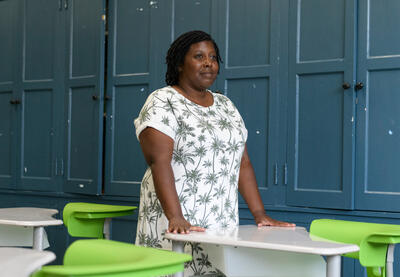My comments in the 2022 Learning for Justice magazine article “Teaching Local History in Tulsa” emphasized the need for honest history lessons in our schools: “The effects of the race massacre are still here in Tulsa. … It’s still very visible. It’s still very segregated. And there’s still a huge difference between South Tulsa and North Tulsa, which is where Greenwood was located.”
During the 2020-21 school year, I was on the team at Tulsa Public Schools that created inquiry-driven units about the 1921 Tulsa Race Massacre. The lessons were created for grades 3-12 in a new social studies curriculum. Although I grew up in Tulsa and knew about the massacre, it is common for many Tulsans to be completely unaware of this history. Our school district sought to end that silence.
Tulsa’s history may be hard, but our students can handle it. And they need a solid understanding of the past to solve problems of the future. Children are naturally curious, and with great care and preparation, educators can help students make sense of this complicated history in Tulsa and connect it to the world around them.
Historical context is important, even at young ages. The themes of the third through fifth grade lessons our team created are resiliency and rebuilding. The lessons are designed to give students background knowledge on the Greenwood community—a wealthy, self-sufficient Black community that was destroyed by white mobs during the massacre. Students learn about the resiliency it took to establish Greenwood in the early 20th century, and the reasons why that resilience was necessary—after Reconstruction, Tulsa was segregated because of Jim Crow laws. And we also explore the causes and impact of the Tulsa Race Massacre to understand the significance of rebuilding the Greenwood community after the attack.
I teach fifth grade, and some years we take field trips to Greenwood to view landmarks and structures that residents rebuilt after the massacre. Because Greenwood’s history is our local history, students can make more personal connections to the place and events. Some students live near Greenwood Avenue; others recognize the churches in the area and stores they have visited. And some students who live in other areas of Tulsa share that their parents had driven them through Greenwood to show and teach them about the history. Personal connections to the community and experiences through family lessons make learning this history more meaningful.
When children understand the causes and effects of historical events, they learn to think about what is happening in their communities and the wider world. Sometimes my students make connections between the lessons about the massacre and current events. One year when I taught the lesson about the massacre—a few weeks after Russia invaded Ukraine—students were moved to learn more about present-day events. A student raised his hand one day and said, “I think the Greenwood people and Ukrainians have something in common. They were both resilient.” When I asked him to tell me more, he said, “They both fought back even though people were against them. In Greenwood, people did not give up when it was burned down. In Ukraine, people are not backing down.” Not only did the theme of resilience resonate with the student, but he could also apply the concept of fighting back to a modern-day international event. Students recognized the destruction of two communities.
When teachers present information directly with quality resources, like our district’s Tulsa Race Massacre units, students are able to make strong connections. And with critical thinking and introspection, children can connect injustices at home to injustices around the globe.
That’s why I teach—because understanding the honest history of our past will help our students create a more equitable and just world in the future.


0 COMMENTS